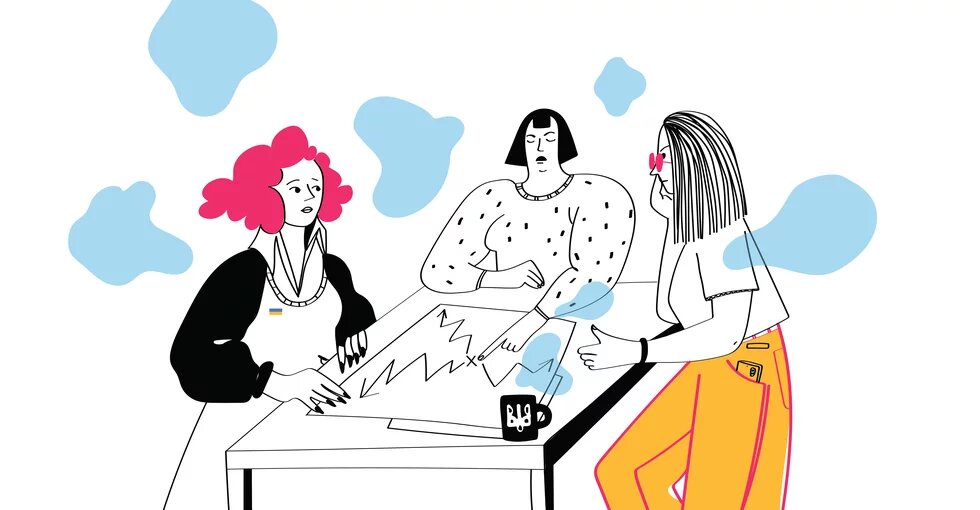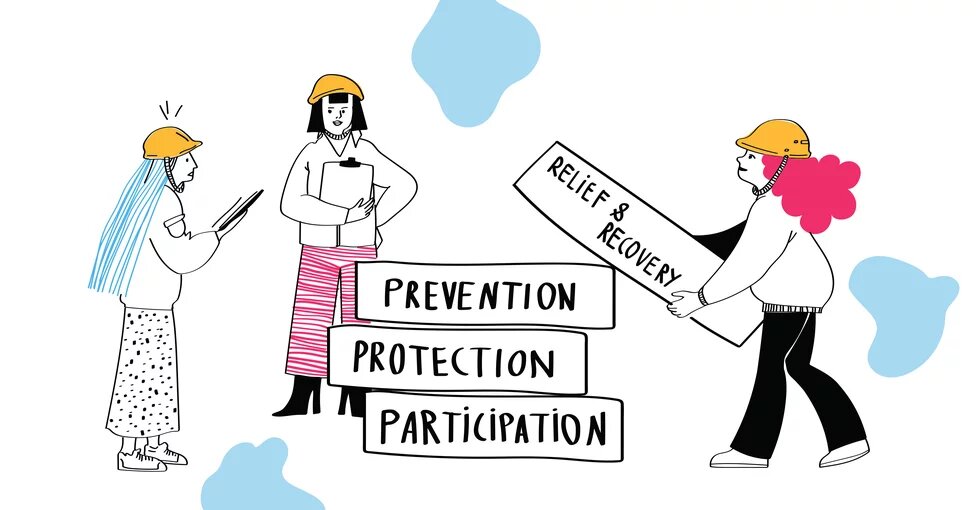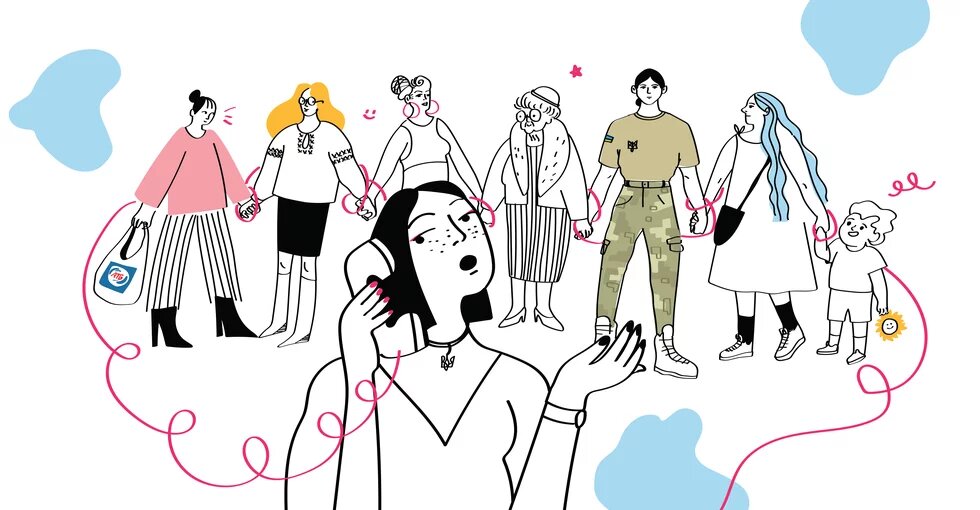

Introduction
The Women, Peace, and Security (WPS) agenda is an international framework resulting from the historic adoption of the United Nations Security Council Resolution 1325 in 2000, along with nine subsequent resolutions covering a variety of related topics. This agenda, a product of transnational feminist advocacy and strategic lobbying inside and outside the United Nations (UN), is the most comprehensive normative framework that we have today that acknowledges the distinct and disproportionate impacts that armed conflicts have on women and girls, holding Member States and other actors accountable for implementing its resolutions. Relying on four pillars – participation, protection, prevention, and relief and recovery – this agenda covers topics such as women’s meaningful participation in peace and security decision-making, protection of gendered harms in conflicts, and the need for gender-sensitive post-conflict reconstruction, for example. One of the main ways to implement it is by developing a National Action Plan (NAP), and as of 2025, more than 110 countries have adopted one.
While the relevance of this framework for Ukraine might seem obvious, implementing it during a full-scale invasion poses unique challenges, considering limited resources, attention, and the government’s reach over its territory due to occupation. This article provides a brief snapshot of this process, relying on original data I collected as part of my doctoral research project covering implementation of the WPS agenda in Ukraine, Moldova, Georgia, and Armenia. For the Ukraine part, which this piece will focus on, my analysis draws on document analysis and 21 semi-structured interviews in 2023 with Ukrainians from non-governmental organizations/civil society organizations (NGOs/CSOs), government, international organizations, and relevant experts. Fieldwork in Ukraine was impossible due to shelling, missile and drone strikes, restricted mobility, and displacement. Most interviews were via Zoom with Ukrainians in various cities or abroad; I also conducted two in-person interviews during regional events with the NGO Global Network of Women Peacebuilders. The sections below summarize some of this research’s key results. The insights provided reflect the context and positions shared by interviewees during this specific research period.
A brief overview of WPS National Action Plans in Ukraine (2016-2022)
Although WPS advocacy began in the early 2010s, it was only after the Maidan Revolution in 2014 that NAP drafting and adoption started and that Resolution 1325 gained more resonance in Ukraine. The Maidan Revolution, the annexation of Crimea, the outbreak of war in the Donbas, the release of the sociological study “Invisible Battalion,” the political recomposition of the Verkhovna Rada (notable women Members of Parliament and WPS early advocates in the Rada included Mariia Ionova, Iryna Gerashchenko, Iryna Lutsenko, and Ivanna Klympush-Tsintsadze, who later became Vice Prime Minister for European and Euro-Atlantic Integration), democratic reforms, legislative changes related to gender equality, the decentralization process, and the influx of international organizations following the revolution all created windows of opportunity and momentum for WPS advocacy by Ukrainian feminist activists, which facilitated developing, supporting, and funding WPS initiatives, leading to the adoption of the first NAP in February 2016.
Ukraine’s first NAP was primarily developed and drafted by women NGOs/CSOs and the Ministry of Social Policy, with input from various government agencies, ministries, parliamentary committees, working groups, regional governments, UN agencies, and civil society. The first NAP mainly focused on women’s participation in the defense and security sectors amid the war in the Donbas and the Anti-Terrorist Operation (ATO). Similar to other countries in my research, the process of creating Ukraine’s first NAP has been described to me as imperfect and a “learning experiment.” Due to a lack of expertise within the government at the time, most of the work fell on women NGOs/CSOs, working with limited resources and time. The first NAP lacked a logical framework and sufficient budget, did not address several key issues, and did not adequately involve conflict-affected women in the process, problems that ultimately led to Ivanna Klympush-Tsintsadze requesting a mid-term review and update.
Building on lessons learned from the first NAP, Ukraine’s Cabinet of Ministers adopted the second NAP in October 2020, covering 2020-2025, which was described to me as more inclusive, participatory, and covering more diverse topics than the first one. Since the process of drafting and adopting the second NAP happened during the COVID-19 pandemic, the context also provided an opportunity for wider-reaching participation.
Russia’s full-scale invasion of 2022: A point of no return
The second NAP, however, no longer reflected the country’s realities after 2022 or the scale of conflict-affected groups, making an update necessary. The mid-term update of the second NAP in December 2022 was initiated by well-established and connected women NGOs/CSOs that have direct links with femocrats (“feminist bureaucrats”) in state institutions, notably decision-makers in key ministries, and highly influential women like Kateryna Levchenko (Government Commissioner for Gender Equality Policy) and some parliamentarians. The update process was described to me as a particularly memorable, transparent, and inclusive experience, given the circumstances. As one gender expert shared, “everybody wanted to do something to contribute to progress, to have a plan, to implement the plan, and to make this overall horrible, painful situation more bearable.” Updating the second NAP brought together a wide range of actors from civil society; NGOs/CSOs; conflict-affected women; civil servants; and national, regional, and local authorities. The updated NAP also added new target groups resulting from the full-scale invasion, such as those forcibly displaced to Russia, those in newly occupied territories, survivors of conflict-related sexual violence (CRSV), and victims of torture and captivity, for example. The update also highlights more practical responses to large-scale sexual violence, war crimes, and trauma.
Both NAPs addressed topics relevant to Ukraine’s evolving reality, torn by Russia’s war in the Donbas and resource depletion. Before 2022, the war in Donetsk and Luhansk oblasts was gendered, with nearly a million internally displaced people (IDPs), mostly women and children, while men were primarily fighting and dying on the frontline. Besides the war-caused economic and humanitarian crises, austerity measures combined with COVID-19 led to unemployment, infrastructure destruction, social benefit disruption, movement restrictions, and strained public services. Women faced a disproportionate care burden, and many resorted to survival sex work or were forced to migrate out of Ukraine, making them susceptible to human trafficking, exploitation, and violence. Vulnerable groups included IDPs, those near the “contact line,” people with disabilities, the elderly, those in rural areas, LGBTQIA+ individuals, people with HIV, and Roma communities. The full-scale invasion worsened these issues.
Mirroring Ukraine’s situation before Russia’s full-scale invasion but expanding its geographical scale, Ukraine’s humanitarian context post-2022 amplified all existing inequalities. While the war was mostly centered in eastern Ukraine before 2022, the affected population drastically increased after that year. All oblasts and citizens of Ukraine experienced the invasion in various ways, from nationwide mobilization of men to a large influx of people across the country’s borders. While numbers are constantly evolving at different points in time, it is estimated that over 5.5 million refugees have fled Ukraine (90% of whom are women and children) in the first months to neighboring countries, and nearly 8 million Ukrainians have become IDPs, making it the fastest displacement crisis in the world and the largest in Europe since World War II.
As of March 2022, UN Women’s rapid assessment of the gendered impacts of Russia’s invasion of Ukraine identified immediate threats for women and girls, including threats to safety from shellings, lack of basic necessities (water, sanitation and hygiene, shelter, food, transport), loss of income, increased gender-based violence, psychological distress, and reduced access to social services and information due to infrastructure destruction. While some immediate needs have improved over time, this survival mode continued for months after. Another rapid gender assessment found that while women were often first responders to the humanitarian crisis, they had little impact on formal decision-making around the humanitarian response or wider peace processes, and issues of social development and gender equality tended to be sidelined for more urgent matters.
The full-scale invasion shifted many things in the WPS landscape in Ukraine, along with feminist organizing and resourcing across the country. In this context, many NGOs/CSOs changed, adapted, or expanded their mission and activities to respond to the humanitarian crisis. Paradoxically, the full-scale invasion also created new opportunities for Ukrainian feminists, which I describe below.
Between burnout and feminist energy
From collecting and distributing aid to citizens and the defense and security sectors, to crowd-funding and documenting Russian war crimes, a clear takeaway from my interviews with Ukrainians is that women-led NGOs/CSOs had to shift their WPS efforts toward immediate crisis management and humanitarian relief, as they were often the first responders on the ground. Challenges include insufficient funds, supply chain disruptions, restricted movement due to shelling (including humanitarian corridors) or occupation, limited access to offices and equipment, and displaced or injured staff.
Women-led NGOs/CSOs have a deep understanding of their communities’ needs and can often respond more quickly on the ground than most international organizations (and sometimes even the government). This is because international organizations may lack familiarity with the local context and often have time-consuming, bureaucratic application and donor reporting procedures. Since Ukraine is a large country, local organizations are better positioned to respond swiftly. Volunteering and mutual aid at the community level have also been used as coping mechanisms for the population.
It is worth mentioning that larger, established women NGOs/CSOs from Kyiv, such as the Ukrainian Women’s Fund, have been helpful in supporting and training smaller organizations at the oblast- and hromada-level, thus forming country-wide solidarity and support networks. Indeed, WPS networks and the structures that existed prior to the invasion were crucial in enabling Ukrainian feminists to mobilize more efficiently in 2022 and after. Informal feminist mobilization for crisis response – often via WhatsApp and Telegram groups – for mutual aid is not necessarily connected to the NAP itself, but the networking opportunities provided by pre-2022 WPS spaces and networks have enabled them to mobilize quickly for humanitarian aid after 2022.
Altogether, the structural, organizational, and circumstantial challenges mentioned in this section compelled many organizations to operate in survival mode, overworked and under-resourced, which ultimately led to collective burnout. My research clearly shows that access to sufficient, sustainable, long-term, core, and flexible humanitarian funding attuned to local needs and priorities remains an immense challenge for feminist and women-led NGOs/CSOs to this day. Two years after the invasion, the funding gap has even increased. In the 2024 report “Still Waiting for the Sky to Close,” women’s organizations responding to the invasion (in Ukraine, as well as in neighboring Hungary, Moldova, Poland, Romania, Slovakia, and Georgia) face the same core challenges as in 2022: systemic lack of funding, mismatched priorities between donors and organizations, complicated application procedures, short application deadlines, and a lack of flexibility in funding.
Echoing other countries in my research, another challenge in Ukraine is the dependence on Western donors for WPS activities. Because there is not enough money for the work that needs to be done on the ground, it creates intense competition among NGOs/CSOs who have to compete for short-term and project-based funding. This can unintentionally lead to a WPS landscape that is “monopolized” by a few experienced, well-connected women-led NGOs/CSOs based in Kyiv, revolving around specific women figures, and leading to the unintentional exclusion of more radical voices or marginalized groups like Roma, youth, and LGBTQIA+ individuals.
Heavy reliance on foreign donors should not necessarily be perceived as a loss of autonomy for women’s organizations but rather understood in terms of strategic agency and choice. My data shows that international organizations and partners have not pushed the WPS agenda in a “top-down” manner but instead have brought visibility and strategic resources to WPS activities and actors in Ukraine, complementing the broad expertise of women NGOs/CSOs and feminist experts, though certainly with challenges and occasional mismatches.
National cohesion, the necessity of self-defense, and a decolonial shift
The full-scale invasion paradoxically also created new opportunities and greater national cohesion. According to several women I interviewed, the full-scale invasion has fostered greater unity among Ukrainian feminists. Before 2022, the Ukrainian feminist landscape working on WPS, peacebuilding, and gender issues was more heterogeneous. While some were working more informally “outside” the system at a grassroots level and held more critical views on peacebuilding and militarization, others were more strategic and “mainstream” in their approach, engaging with decision-makers, defense and security sectors, and international organizations. After the invasion, differences and disagreements among feminists faded into the background to produce a united message: Ukrainian feminists are also calling for more weapons, especially air defense systems, out of urgent necessity for survival right now. While this unity has led to positive outcomes like coherent and effective advocacy despite internal differences, it has also resulted in the marginalization of other feminists who have diverging views.
Unsurprisingly, the full-scale invasion profoundly impacted Ukrainians’ understanding of peace and security, and after 2022, it became very difficult to talk about what peace means and entails in that new reality. Triggering existential fears among Ukrainians, it is clear that national security is the priority and a “precondition” for NAP implementation. As one interviewee mentioned to me, “If there is no country, there is no NAP!”
Finally, my interviews revealed frustrations, particularly regarding militarism and weapons export, and sparked a decolonial shift in Ukrainian feminism. Russia’s invasion exposed deep divisions in global feminist solidarity, created “dialogues of the deaf,” and showed the inability of Western anti-militarist feminists to listen to the voices and needs of Ukrainian women. Some Western feminists’ positions on the war in Ukraine have rightfully shocked Ukrainian feminists, shifting from indifference to outright reproduction of pro-Russian propaganda narratives and a refusal to listen, which led to the well-known feminist counter-manifesto “The Right to Resist.” This decolonial shift in Ukrainian feminism is evident through a re-appropriation of the narrative and pride in the uniqueness of their feminist history, struggles, and realities as they seek to overcome decades of brutal Russian imperialism and envision a feminist future for their country.
Conclusion: Learning from the Ukrainian experience
Some of the results observed in this research are not unique to Ukraine but rather reflect global patterns in implementing the WPS agenda, such as various coordination issues among stakeholders and sectors, and how change and ownership of the NAP often depend on motivated individuals within the system. However, I argue that what makes the Ukrainian experience with WPS unique is more about the process rather than the NAP itself. Developing, implementing, and revising NAPs during a full-scale war, with massive military and civilian casualties and occupation, is an achievement in itself, both in terms of resources and human capacity. This places Ukraine in a distinctive position globally regarding WPS policy development and innovations during crises. In many ways, the decolonial turn shows how the tables have turned regarding who “teaches” whom; it is now Ukraine that can teach the world about WPS, not the other way around.
Indeed, Ukraine demonstrates many good practices and notable achievements in WPS, such as the 1325 Coalitions, local efforts at the oblast and hromada levels, and extensive consultations with civil society on the NAPs, including for their updates. Mid-term reviews and updates are especially commendable (and rare worldwide), showing that NAPs are like roadmaps and living documents that evolve as the country’s situation changes.
Most of my interviewees expressed how relevant and useful the NAPs have been for their work. When discussing the importance of the NAP, words like “roadmap,” “instrument,” “framework,” and “benchmark system” often came up. While they both support and criticize WPS to varying degrees, they highlighted how the NAP, despite being an imperfect tool, is a tool among others, offering limitations as well as strategic opportunities, helping them gain visibility, address specific issues observed on the ground, and ensure that the government remains accountable and responsible regarding international commitments, such as Euro-Atlantic aspirations.
My research clearly shows that the NAP processes in Ukraine – including the first and second NAPs and their updates – were sustained by a strong, country-wide feminist alliance of femocrats, such as high-level women in the state apparatus, gender focal points in key ministries, Members of Parliament, public servants, a vibrant feminist civil society, and several international organizations that arrived in Ukraine after 2014, notably the UN Women Ukraine country office. But beyond the NAP processes, this finding can show the world how powerful and effective united, strong feminist networks can be.
In conclusion, many Ukrainian feminists I interviewed find a glimpse of hope in reconstruction and recovery. The widespread destruction of civil and energy infrastructure, environment, and ecosystems, along with the disruption of socio-economic activities, all have deeply gendered impacts. Women’s leadership will be crucial in every stage of the recovery process, from rebuilding infrastructure to helping displaced people return safely, promoting coexistence among Ukrainians, and rehabilitating veterans. The NAP can serve as a valuable tool to ensure women are included in future negotiations, peacebuilding, and recovery efforts.
